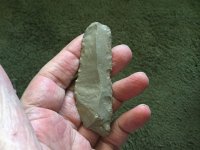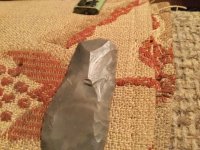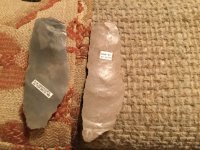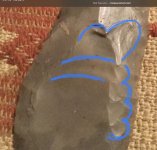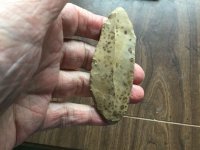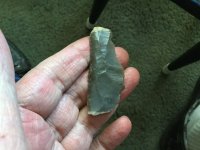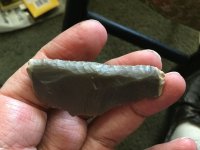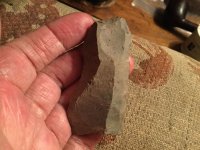uniface
Silver Member
Not technically a blade, because removals were from various directions. One of many treasures (to me, at least) picked out of Tom Davis' junk box. Hard to believe people didn't appreciate artifacts like this back then. Hard for me to believe that not a few people still don't.
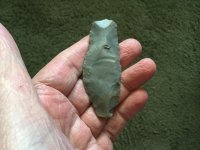
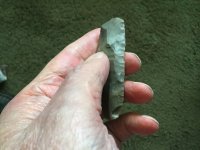
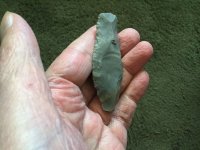
Clovis proper, as Doc G pointed out, used the blades they made the way they came off the core -- without subsequent modification. (He used this as a point distinguishing Clovis from European Achuleans, who used theirs as tool stock).
Whoever made this and many similar ones though, and apparently not that long after Clovis proper stepped off the stage, clearly didn't get the memo on that.



Clovis proper, as Doc G pointed out, used the blades they made the way they came off the core -- without subsequent modification. (He used this as a point distinguishing Clovis from European Achuleans, who used theirs as tool stock).
Whoever made this and many similar ones though, and apparently not that long after Clovis proper stepped off the stage, clearly didn't get the memo on that.
Amazon Forum Fav 👍
Last edited:
Upvote
0


